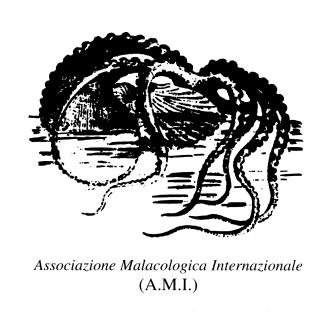Study
on the properties of bio-active peptides from marine molluscs
This project involves the
University of Roma III (P. Ascenzi) Genova (M. Bolognesi) and Ferrara
(E. Menegatti).
 It is
financially supported by a grant from the Ministero dei Beni Culturali
of Italy, through the International Malacology Association (AMI, Rome).
The research is aimed to identify and characterize biotechnologically
and therapeutically relevant proteins extracted chiefly from marine
molluscs. In particular, this research has presently focused on conopeptides,
the bio-active components of the venom from the molluscan genus Conus.
It is
financially supported by a grant from the Ministero dei Beni Culturali
of Italy, through the International Malacology Association (AMI, Rome).
The research is aimed to identify and characterize biotechnologically
and therapeutically relevant proteins extracted chiefly from marine
molluscs. In particular, this research has presently focused on conopeptides,
the bio-active components of the venom from the molluscan genus Conus.
This large and diverse genus of prosobranch gastropods which includes
more than 500 species widespread in all tropical and subtropical marine
regions is a major component of shallow coral reef- associated communities.
In the temperate Mediterranean sea, a single species is recognized,
Conus ventricosus, whose venom is presently under study.
Several and diverse peptides
contained, as a specific, distinct complement among other compounds
in the venom of Conus, have been optimized through evolution to target
specific ion channel and membrane receptors, with very high affinity
and selectivities. The majority of these peptides are short aminoacid
chains, either linear or disulphide bridged, consisting of 8 to 30 aminoacidic
residues. Some of them, classified as conotoxins, are already employed
as a useful tool as highly specific probes for neuronal and muscolar
ion- channel subunities. Researchers are now exploiting the potential
therapeutic value. Possible applications have been already pointed out.
The w-conotoxins, for instance, targeting Calcium channels, proved to
be efficient in pain therapy and stroke. The a-conotoxins, which antagonize
the nicotinic acetylcoline receptor, appear to have potential application
in anxiety, Parkinsonís disease, cancer, hyperthension, and pain.
The k-conotoxins targeting the Potassium channels, have a potential
use in the therapy of hypertension, arrhitmya and ashma. Conantokins,
originally isolated from the venom of fishing- hunting cone snails,
are 17 aminoacid linear peptides that adopt an a- helical conformation
in solution and contain post traslational modifications including five
carboxy- glutamic acid residues and an amidated C-terminal. Conantokins
have proved to act on the N-Methyl-D-Aspartate receptor (NMDA) thus
promising useful applications in epilepsy, Parkinsonís disease and stroke.
Contulakins, targeting the neurotensin receptor may be employed in the
therapy of pain and disorders of the central nervous system (CNS).
Thus, the high affinity and specificity, joining the minimum molecular
weight are a unique characteristic of conopeptides, allowing an easy
synthesis and enabling drugs engineering. As different species of Conus
are investigated, new effects and different properties are observe opening
new insights in pharmaceutical perspectives.
Copyright © 2000 -
University of Cagliari (Italy) - All right reserved


